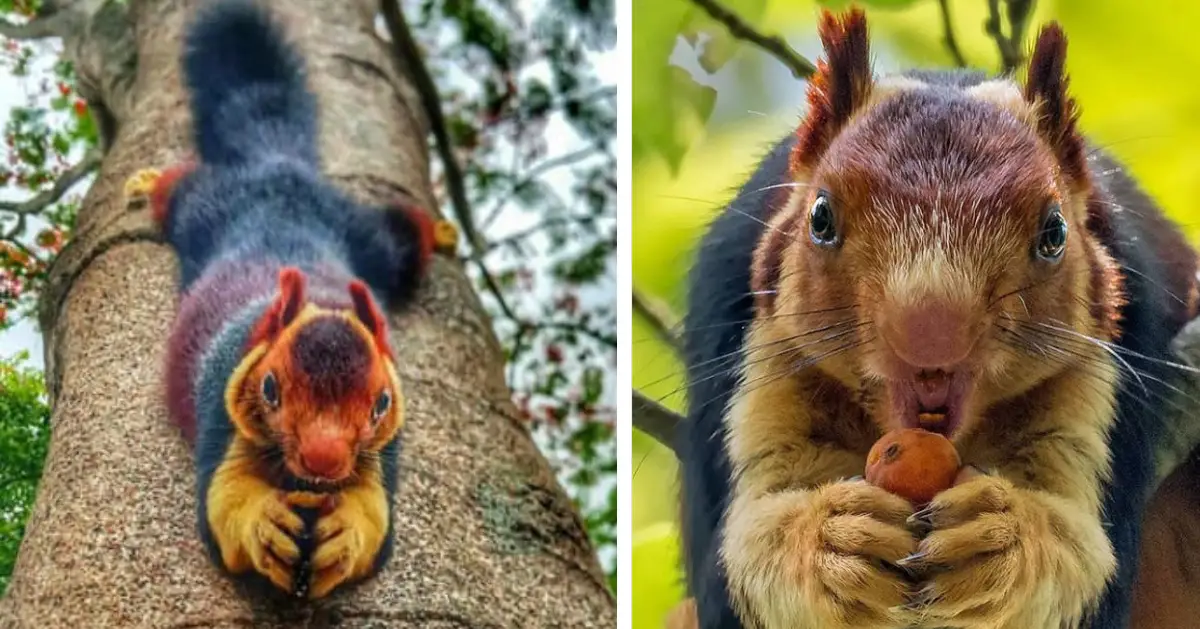When thinking about squirrels, it’s unlikely to imagine an exotic animal, but rather a sweet tiny rodant whose job is to steal the seeds from your bird feeder. Whether grey, black or even red (the American red squirrel), they are all look pretty much the same and I am so sure each and every North American has spotted one, at least once.
View this post on Instagram
Anyway, if you venture yourself into the deep Indian forest, hoping for a quirrel sighting, things are getting a little different, because the squirrels here look so unsimilar, you won’t even think they are real.

The exotic Indian forests are home for the world’s largest squirrel – the Malabar squirrel or the Indian giant squirrel. Thanks to their multicolored coat, these lovely creatures reassable a very unique sight, but also an extremely elusive one.

Actually, when wildlife enthusiast and squirrel expert John Koprowski, first stambled upon a Malabar squirrel, he thought he might discovered a new species of primates. It happened back in 2006.
Anyway, the Malabars are definitely a squirrel subspecies. Yet a completely different one, at least from those we are all used to see in our backyards. In comparation, they are nothing but giants, having twice the bodu size of the common squirrel. They can reach up to 36 inches from head to tail.
View this post on Instagram
However, it is not their size what makes these creatures so special, but the combination of colors that makes their coat. A breathtaking mix of purple, black, brown and even orange makes their fur so unique. But the Malabar giant squirrels didn’t picked this multicolred coat by choice, Thanks to it, they get teh best camouflage against their natural predators.

“In the shaded understory of a dense forest, the patchy colors and dark hues are a great adaptation to avoiding detection,” squirrel expert John Koprowski said. “But when you see these in the sunlight, they show their ‘true colors’ and beautiful pelage.”
These Indian giant squirrels may also be part of a prehistorical group of squirrels, according to prof. Koprowski. ““They’re part of a group of squirrels that is pretty ancient,” he added. “They’re a unique evolutionary group that’s been here a long time, which is a good thing.”

